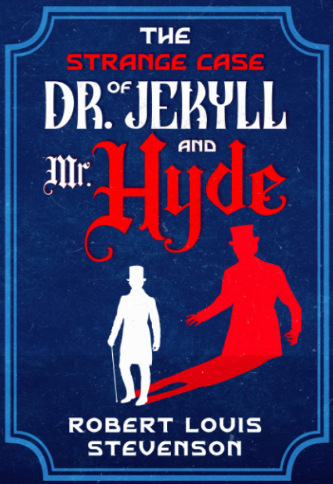The Strange Case of Dr. Jekyll and Mr. Hyde

"The Strange Case of Dr. Jekyll and Mr. Hyde," published in 1886 by Robert Louis Stevenson, is a novella that delves into the duality of human nature and the struggle between good and evil. The story is set in Victorian London and follows the respectable Dr. Henry Jekyll, a well-regarded scientist and lawyer. Dr. Jekyll becomes increasingly fascinated by the idea that every person contains two sides: one good and one evil.
To explore this theory, Dr. Jekyll creates a potion that transforms him into Edward Hyde, a completely separate personality who embodies pure malevolence and amorality. As Hyde, Jekyll experiences a sense of freedom and power, indulging in darker desires without the constraints of societal expectations or his own conscience. However, the transformations soon begin to occur spontaneously, and Jekyll finds himself losing control over his darker side.
The story unfolds through the perspective of Mr. Gabriel John Utterson, a lawyer and friend of Dr. Jekyll, who becomes increasingly alarmed by Jekyll's odd behavior and the violent actions of Mr. Hyde. Utterson's investigations lead to a shocking revelation about the true identity of Mr. Hyde, culminating in a tragic and thought-provoking conclusion.
Stevenson's novella masterfully explores the concept of duality within the human psyche. The stark contrast between Dr. Jekyll's benevolence and Mr. Hyde's malevolence serves as a powerful metaphor for the inner conflict between good and evil that exists in everyone. This theme remains relevant and thought-provoking, prompting readers to reflect on their own nature and moral choices.
The novella delves deep into the psychological complexities of its protagonist. Dr. Jekyll's struggle with his dual identity and the ultimate loss of control over his darker self create a compelling narrative that engages readers on an emotional and intellectual level.
Stevenson's depiction of Victorian London adds a rich, atmospheric backdrop to the story. The dark, foggy streets and the contrast between the respectable and the sordid aspects of the city enhance the novella's gothic and suspenseful tone.
The story is told through a series of documents, including Utterson's narrative, letters, and Dr. Jekyll's confession. This epistolary format creates a sense of mystery and suspense, gradually revealing the truth behind the transformations.
The novella's exploration of identity, morality, and the consequences of unchecked ambition makes it a timeless piece of literature. Its themes continue to resonate with modern readers and have influenced countless works in literature, film, and other media.
"The Strange Case of Dr. Jekyll and Mr. Hyde" holds a significant place in the horror genre as one of the earliest and most influential works of psychological horror. Unlike traditional gothic horror that often relies on supernatural elements, Stevenson's novella delves into the horrors of the human mind and the potential for evil that lies within everyone. This focus on internal rather than external monsters was groundbreaking and paved the way for future explorations of psychological horror.
The novella's impact on the genre is profound, inspiring numerous adaptations and reinterpretations across various media. Its themes of duality and the darker aspects of human nature have been echoed in countless horror stories, solidifying its status as a cornerstone of psychological horror.
Robert Louis Stevenson's "The Strange Case of Dr. Jekyll and Mr. Hyde" is a masterful exploration of the duality of human nature and the battle between good and evil within the self. Its psychological depth, atmospheric setting, and engaging narrative make it a compelling read that continues to resonate with readers. As a pioneering work in the horror genre, it has left an indelible mark on literature and remains a timeless classic that challenges readers to confront the darker aspects of their own nature.